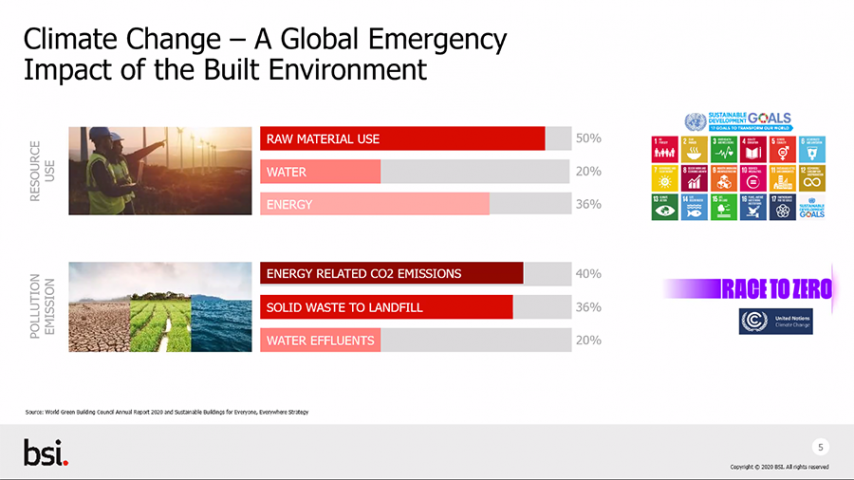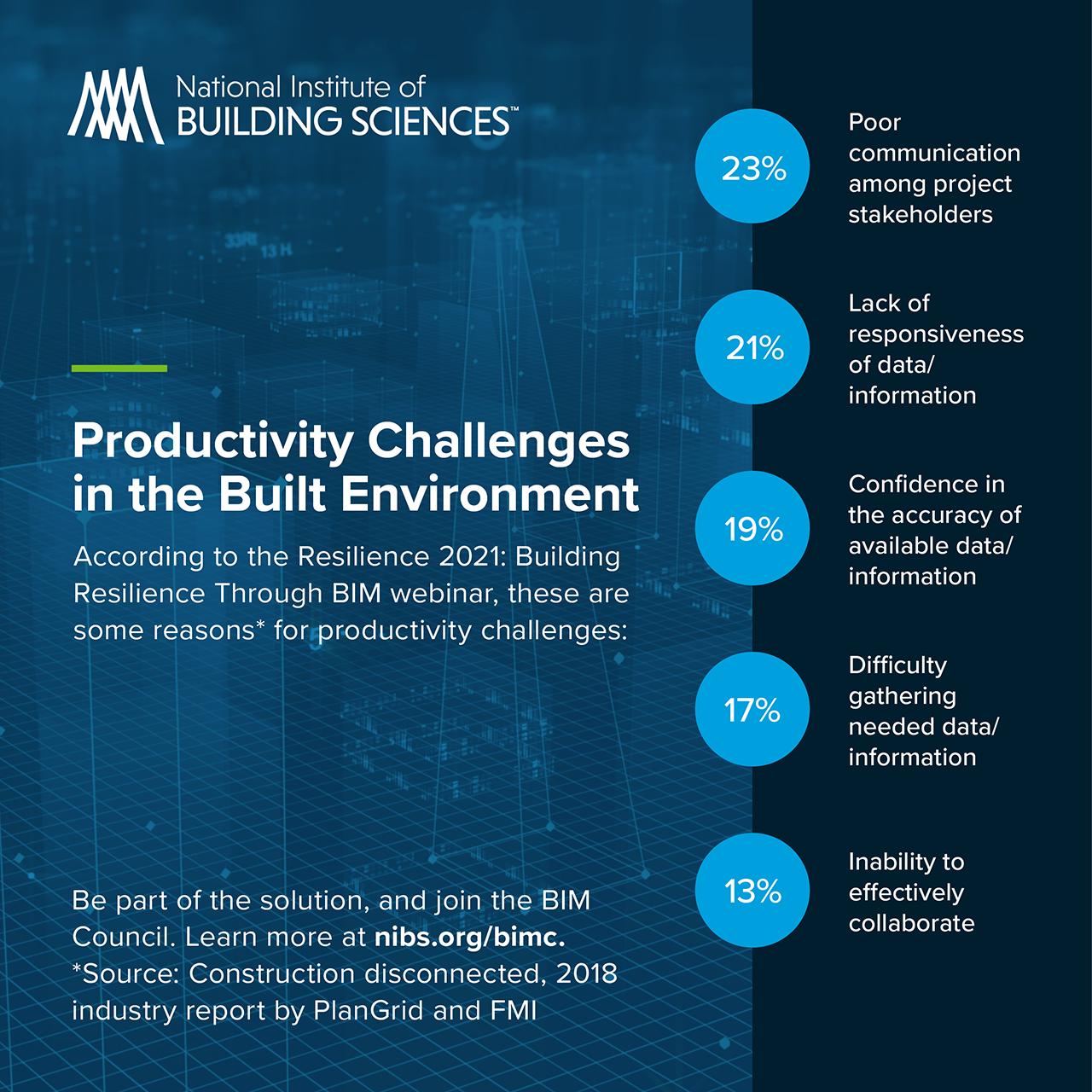
The built environment is being challenged by many trends and disruptors: digital transformation, off-site manufacturing, sustainability concerns, an aging workforce leading to lack of skilled labor, as well as COVID-19, which is affecting the health, safety, and well-being of workers.
Organizations must remain resilient to meet challenges and continue to grow and flourish. To become resilient, we must respond and adopt new ways of thinking and working.
Building information modeling (BIM) can help address the climate, urbanization, performance and skills shortage challenges, alongside the implementation of many best practice approaches. Organizations that seize this opportunity will be able to successfully compete in global markets.
On October 19, 2021, the National Institute of Building Sciences hosted the next installment of the Resilience 2021 webinar series, covering the fundamentals of building information modeling, why organizations should adopt BIM, where to start if a company does not already have a BIM strategy, and National BIM Standard-United States (NBIMS) core requirements and ISO 19650.
Drew Rouland, NIBS Vice President of Government Operations, opened the session by introducing the panel, which included Rachel Riopel, AIA, NCARB, Digital Practice Leader, HDR; Connor Christian, PE, Senior Product Manager, Procore Technologies; and Rahul Shah, Sector Development Director, BSI Group Inc. Anne-Marie Pizzitelli, Global Head of Marketing, Built Environment with BSI Group Inc., served as moderator.
We received more than 500 registrants for the webinar.
POLL: WHERE ARE YOU ON BIM IMPLEMENTATION?
At the start of the session, NIBS released a poll, asking attendees to answer where they were on their BIM implementation journey.
The findings: 52 percent said they do not use BIM; 41 percent indicated they use BIM as a best practice, but they are not certified; 6 percent said they were interested in becoming certified to BIM ISO 19650; and just one percent indicated they were certified to BIM ISO 19650 Kitemark.
BSI Group Inc.’s Shah said the global emergency of climate change is the chief reason toward digitalization of the building sector. Seventy-six percent of pollution emissions come from energy-related CO2 emissions and solid waste to the landfill.
“We, as a sector, have this massive opportunity, in terms of tackling the world’s most pressing sustainability challenges and digitalization, including BIM, IoT, sensors and smart assets, have a key role to play in tackling these challenges,” Shah said.
PRODUCTIVITY CHALLENGES IN THE BUILT ENVIRONMENT
When breaking down productivity, Shah mentioned that construction professionals spend 35 percent of their time on non-optimal activities, resulting in 14+ hours lost per person per week, according to a study conducted by FMI and PlanGrid. This is time that could be better spent on priority activities.
The reasons for productivity challenges include poor communication among project stakeholders (23 percent); lack of responsiveness of data/information delivery (21 percent); confidence in the accuracy of the available data/information (19 percent); difficulty gathering needed data/information (17 percent); and inability to effectively collaborate (13 percent).
So, what’s driving change in the built environment? Innovation is at the heart of it, and this covers many topics, including artificial intelligence, machine learning, drones, IoT, off-site construction, modern methods of construction, circular economy, digital twins, and building information modeling.
BIM DEFINES A SET OF PROCESSES
The business value of BIM and ISO 19650 is great.
“BIM defines a set of processes,” Shah said. “It’s about procurement, management, and exchange of information.”
The benefits include improved productivity, better quality assets, better stakeholder engagement, reduction in rework and waste, improved sustainability and circularity, enable DfMA approach, designing out waste, and improved business resilience.
Becoming ISO 19650 compliant requires a lot of change for an organization, beyond just changing internal processes, said Christian, with Procore Technologies.
“Look for tools that make you ISO 19650 compliant,” Christian said. “When you use them, it forces you into the process. It’s about choosing your tools and from the owners’ side – making your requirements fit.”
The panel stressed the importance of timing – making sure it’s the right time to transition your processes – and also allowing for the time to test various processes.
“BIM is about improving collaboration, communication, and consistency,” Shah said.
LEVERAGING SHARED KNOWLEDGE
Riopel, with HDR, recently became Chair of the NIBS Building Information Management Council. She said the conversation is timely, considering the work being done to form new and advance existing national standards to serve the U.S. marketplace and our projects.
When it comes to formulating the National BIM Standard-United States v4, experts are looking closely at international standards, for both relevance and consistency.
During the panel talk, the question came up about why construction contractors should implement ISO 19650, if clients do not yet mandate it.
Essentially, waiting for a client to tell you to be more productive or efficient is not smart business.
“It’s a hard decision to make – when to embark upon transitioning in your process,” Riopel said. “But to sit back and watch is probably the riskiest position to be in.”
Christian added that today’s tools make compliance easy.
“There are many ISO 19650 compliance tools,” he said, adding that there will be a learning curve with BIM implementation. “This isn’t like 15 years ago. There are tools to make it easy for everyone.”

WHAT’S COMING UP
The next Resilience 2021 webinar takes place November 17, 2021. It will cover the shift from relief and response to hazard mitigation.
To catch up on previous installments of the Resilience 2021 series, visit the site.




